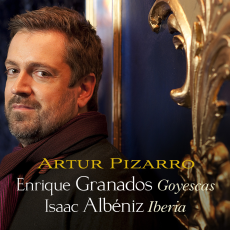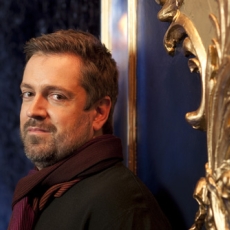Artur Pizarro - Albeniz & Granados - Audio Video Club of Atlanta
At last (and well worth waiting for): Artur Pizarro's luminous and insightful take on Enrique Granados' Goyescas and Isaac Albéniz' Iberia, Books l - IV. In preparing for the daunting task of recording these twin peaks of Spanish piano music, Pizarro took his work seriously, beginning with his choice of instrument, a "newborn" Blüthner fresh from the factory in Leipzig, Germany. "I was looking for a certain period sound without the physical frailty and frustrations of a period piano," Pizarro explains. "The Blüthner gave me all of this and more," including the build quality, strength and quick action he needed. Whether we should give major credit to the instrument or the way Pizarro plays it, I have seldom heard such fine gradations of pianissimo as he coaxes from it in passages such as the final section of Albéniz' Fête-Dieu à Seville and the ghostly serenade that concludes Granados' Epilogo in Goyescas. In both cases, the exquisite dynamics are for musical and dramatic effect, not for show.
As a musician and as a talented amateur painter, Granados was attracted to the paintings of Francisco de Goya, to which he paid tribute in his suite Goyescas (though, as Pizarro observes, he sanitized the artist's more earthy and grotesque elements). Pizarro plays six of the Goyescas, leaving off the oft-omitted El pelele (the straw mannequin) commemorating a Goya painting of naughty majas tossing the effigy of a luckless suitor in a blanket. The effect of its omission is to make a suite of sketches with a decidedly poignant mood even sadder.
Pizarro does a beautifully insightful job characterizing the remaining six Goyescas, which come together to tell the story of a tragic confrontation between two ardent suitors of the same lady: (titles translated) 1. Flattery 2. Conversation at a Barred Window 3. Candlelight Fandango 4. Sighs, or The Maiden and the Nightingale 5. Love and Death and 6. Epilogue. He maintains the feeling of an improvisation in the delicately figured, lushly romantic Goyesca 4, expertly leading us up to the moment when the Nightingale bursts forth "with the jealousy of a wife" (Granados). And he responds to the extreme demands of 5, which requires exquisite control of the pedals while keeping the structure firmly in mind. 6, as befits its subtitle of "The Ghostly Serenade" is eerie, skeletal and compelling, requiring finely judged timing and control of its soft dynamic shadings.
Albéniz' masterwork Iberia is less ambitious in its artistic aims than the lyrical and dramatic Goyescas, being essentially a travelogue of the regions of Spain, with the music characteristic of each. It is, however, nonetheless difficult to execute. Like Granados, Albéniz constantly requires the pianist to re-think his hand placements to meet the requirements of the music. As Pizarro expresses it, "The piano writing is uncommonly dense with hands frequently playing over one another and even through each other!"
There are 12 pieces in Iberia, in four Books of three each. I wish I had the space to describe the wonders of each of them to you. Highlights would certainly include the richly evocative Triana, inspired by the gypsy quarter of old Seville, and the three fine pieces, Rondena, Almería, and El Albaicin, that were inspired by the regions of Andalusia and the district of Madrid where the subtly infectious rhythms of the Moors have lasted the longest. And listen to the way Pizarro structures the moment in the afore-mentioned Fête-Dieu à Seville when the festivity ceases suddenly as is replaced by the hushed adoration of the final section, which no doubt represents the Elevation of the Host, which is what that this particular feast (otherwise known as Corpus Christi) is all about. Glorious!

